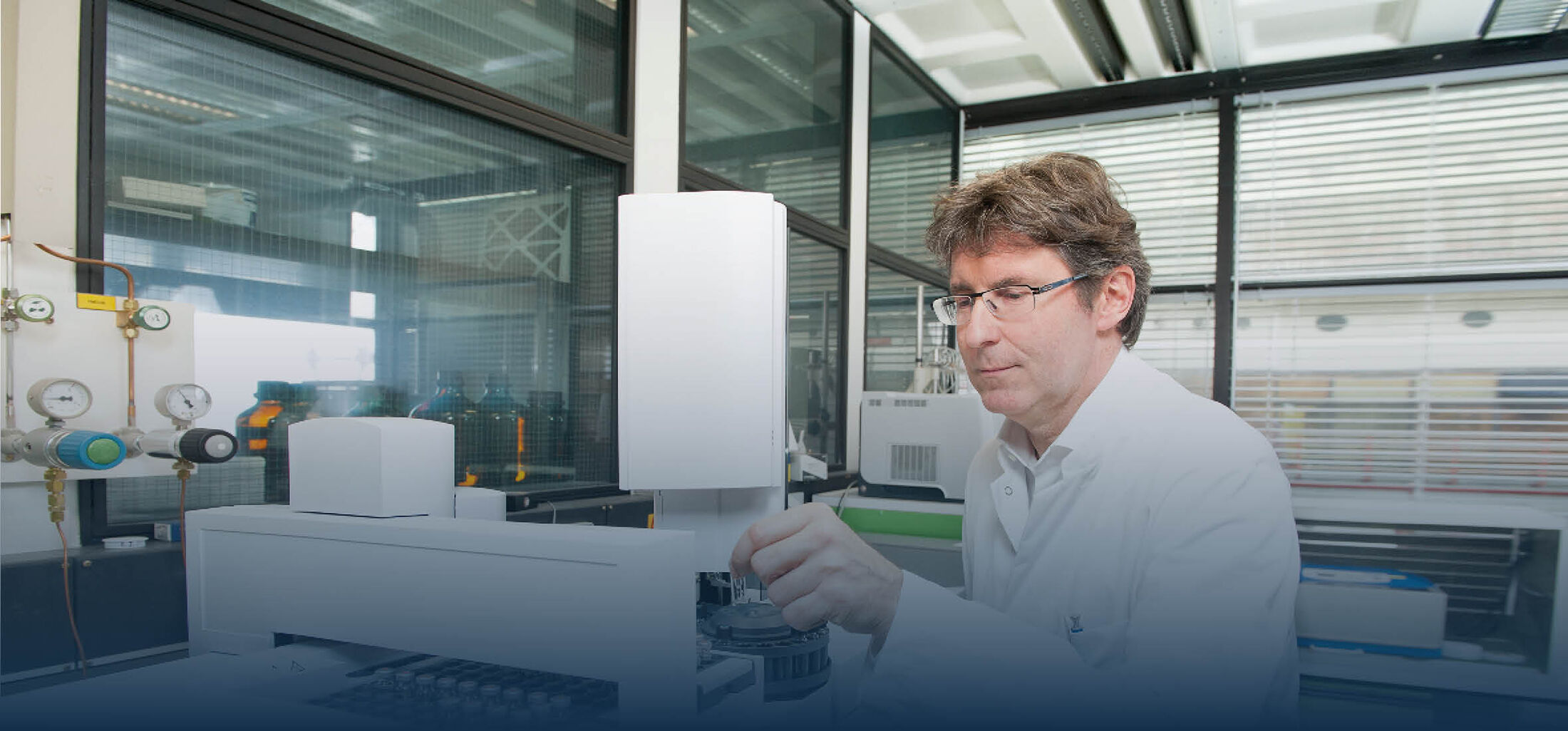Aachen Workplace Simulation Lab
Occupational medical examinations of health hazards from various workplace hazards are complicated by the fact that real workplaces usually contain a mixture of different pollutants and that the exact exposure conditions (individual duration and strength) are difficult to determine. With the "Aachen Workplace Simulation Lab", which is operated in cooperation with the RWTH Institute for Welding and Joining Technology (ISF), it is possible to investigate various workplace hazards in isolation and under controlled conditions - in compliance with the applicable workplace limits - with regard to their effects on humans. As part of the newly appointed professorship "Healthy Living Spaces", the laboratory will be expanded to enable control of thermal, visual, and acoustic exposures.
Extensive measuring equipment is available for measuring external exposures to particulate hazardous substances (welding fumes, soldering fumes, dust). Both the mass concentration of the particles and the number concentration and number size distribution can be measured with a resolution in time. For the real-time measurement of gaseous hazardous substances, gas detectors are available for most important gases (ozone, NOx, CO2 and CO). Various analytical methods such as GC/MS, GCxGC/TOF-MS, HPLC/MS, AAS or HPLC-ICP/MS can be used to detect other airborne pollutants. These devices can also be used to record the actual exposure of workers in real workplaces. It is also possible to investigate existing indoor or workplace exposure to bacteria or fungi.
Methods of biomonitoring are used to measure internal exposure. This involves determining how hazardous substances that have been absorbed are excreted from the body. These methods can be used to infer from an internal exposure the previous external exposure and thus check compliance with occupational exposure limits.
For many hazardous substances, especially particulate hazardous substances, it is assumed that they trigger an inflammatory reaction in the body, which becomes chronic on repeated contact with the hazardous substance and can cause pulmonary or cardiovascular disease after many years. In order to identify early inflammatory reactions of the body, markers of inflammation are sought in various body fluids during and after exposure: in the blood (systemic inflammation), in nasal secretion (topical inflammation) and in sputum (topical inflammation). Further immunological methods are used to investigate how the hazardous substance induces the observed inflammation.
A large number of occupational medicine studies have been carried out to date, mostly in close cooperation with the employers' liability insurance associations. Special focus has been placed on the effect of welding fumes, but soldering fumes and gases such as NO2 have also been investigated:
- Brand, P., Havlicek, P., Steiners, M., Holzinger, K., Reisgen, U., Kraus, T., Gube, M.
- Exposure of healthy subjects with emissions from a gas metal arc welding process - Part 1: Exposure technique and external exposure, Int Arch Occup Environ Health. 2013, 89, 25-30.
- Gube, M., Brand, P., Schettgen, T., Bertram, J., Gerards, K. Reisgen, U., Kraus, T.
Experimental exposure of healthy subjects with emissions from a gas metal arc welding process—part II: biomonitoring of chromium and nickel, Int Arch Occup Environ Health. 2013, 89, 31-38. - Brand, P., Bischof, K., Siry, L., Bertram, J., Schettgen, T., Reisgen, U., Kraus, T., Gube, M.
Exposure of healthy subjects with emissions from a gas metal arc welding process - Part 3: Biological effect markers and lung function, Int Arch Occup Environ Health. 2013, 89, 39-45. - Brand P, Lenz K, Reisgen U, Kraus T.
Number size distribution of fine and ultrafine fume particles from various welding processes. Ann Occup Hyg. 2013 Apr;57(3):305-13. - Hartmann L, Bauer M, Bertram J, Gube M, Lenz K, Reisgen U, Schettgen T, Kraus T, Brand P.
Assessment of the biological effects of welding fumes emitted from metal inert gas welding processes of aluminium and zinc-plated materials in humans. International Journal of Hygiene and Environmental Health 2014: 217(2-3): 160-168. - Brand P, Bauer M, Gube M, Lenz K, Reisgen U, Spiegel-Ciobanu VE, et al.
Relationship between welding fume concentration and systemic inflammation after controlled exposure of human subjects with welding fumes from metal inert gas brazing of zinc-coated materials. J Occup Environ Med. 2014 Jan;56(1):1-5. - Gube M, Kraus T, Lenz K, Reisgen U, Brand P.
Biological effects of emissions from resistance spot welding of zinc coated material after controlled exposure of healthy human subjects. JOEM. 2014;56:673-7. - Bertram J, Brand P, Schettgen T, Lenz K, Purrio E, Reisgen U, et al.
Human Biomonitoring of Chromium and Nickel from an Experimental Exposure to Manual Metal Arc Welding Fumes of Low and High Alloyed Steel. Annals of Occupational Hygiene, 2015, 467-480, 59 (4). - Bertram J, Brand P, Hartmann L, Schettgen T, Kossack V, Lenz K, et al.
Human biomonitoring of aluminium after a single, controlled manual metal arc inert gas welding process of an aluminium‑containing worksheet in nonwelders. Int Arch Occup Environ Health. 2015, 913-923, 88 (7). - Dewald E, Gube M, Baumann R, Bertram J, Kossack V, Lenz K, Reisgen U, Kraus T, Brand P.
Assessment of the Biological Effects of Welding Fumes Emitted From Metal Active Gas and Manual Metal Arc Welding in Humans. J Occup Environ Med 2015; 57: 845-850. - Markert A, Baumann R, Gerhards B, Gube M, Kossack V, Kraus T, Brand P.
Single and Combined Exposure to Zinc- and Copper-Containing Welding Fumes Lead to Asymptomatic Systemic Inflammation. J Occup Environ Med 2016; 58: 127-132. - Brand P, Bertram J, Chaker A, Jorres RA, Kronseder A, Kraus T, et al.
Biological effects of inhaled nitrogen dioxide in healthy human subjects. Int Arch Occup Environ Health. 2016;89:1017-24. - Baumann R, Gube M, Markert A, Davatgarbenam S, Kossack V, Gerhards B, Kraus T, Brand P.
Systemic serum amyloid A as a biomarker for exposure to zinc and/or copper-containing metal fumes. Journal of exposure science & environmental epidemiology 2017. doi:10.1038/jes.2016.86


